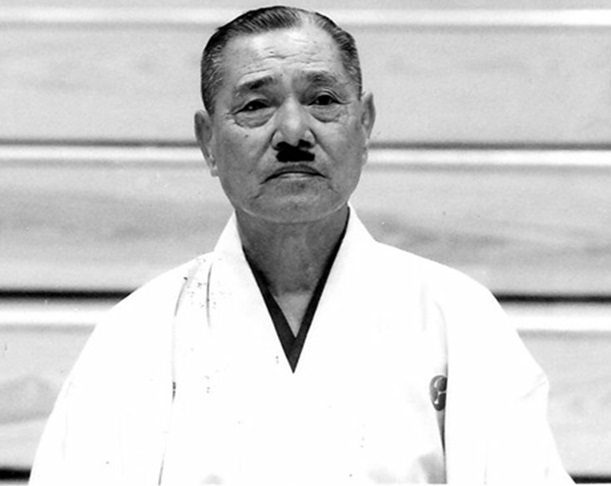|
Senior practitioners of Chito-ryu karate live under long shadows. First there is enormous shadow cast by founder Tsuyoshi Chitose,
a martial arts virtuoso who studied under many masters and synthesized what he learned into his remarkable art.
Then there are the shadows cast by the pioneers who introduced Chito-ryu to their countries and amassed impressive organizations.
In North America these larger-than-life figures include Masami Tsuruoka, the Father of Canadian Karate; Shane Y. Higashi, head of
the Canadian Chito-ryu Karate Association; and the late William Dometrich, founder of the United States Chito-ryu Karate Federation.
As longtime adherents of this karate style, most of ask ourselves at some point, What we should learn and emulate from these
impressive examples?
The answer to this question is complicated. Their dedication, hard work, discipline, compassion and quest to understand are all qualities we should embrace.
But how about becoming the supreme leader of a large organization (well,
large by karate standards)?
Virtually impossible. The founder of the style and early pioneers introduced their art to mainland Japan and their respective countries
at a time when karate was largely unknown. They took advantage of growing public interest in this mystical new martial art to build up
classes and followings. You cannot grow by the same leaps and bounds in today’s saturated martial arts market.
We sometimes forget that the North American pioneers were all low-ranking black belts when they started teaching.
As a shodan or nidan starting out today, you would have little chance of amassing a huge national network unless you were also
a protégé of the Tony Robbins school.
This is not to diminish the pioneers’ achievement or expertise. As low-ranking black belts they were miles ahead of their new students,
who knew nothing. And they maintained this distance over the years as they evolved into their positions, becoming true experts
and commanding wide respect
Then the question is, as senior practitioners how do we best honour their efforts? As juniors the answer is easy. We keep our mouths shut,
do what we are told, work hard and grow silently. But as we develop within the art, we are supposed to eventually start thinking for
ourselves, combining our insights with what we have been taught to create something new and personal.
In some cases, this growth can continue within the established karate organization. In others,
the senior practitioner may find it necessary to strike out on their own to pursue their studies. In Japan,
for example, we have senior Chito-ryu people such as Ken Sakamoto and Masaru Inomoto starting their own groups,
Ryusei Karate-Do and Jikishin-ryu.
In Canada, the late David Akutagawa split off from the CCRKA to start his Renshikan group. And Earl Robertson also left and now runs
his Yoshukan Karate.
In the United States, splintering includes various United States Chito-ryu alumni: Koshin-ha Chito-ryu, with senior instructors
Terry Valentino and the late James Davenport; Roland Figgs, who runs Ryusei Karate-Do United States; and Cyna Khalily and Mina Ludwig,
who recently left the U.S. hombu to run their own independent dojo.
And the list goes on. Some who stay with the organizations established by the founder or pioneers may question the motivations
and loyalty of those who start split-off groups. What parts do ego and politics play?
These factors are undoubtedly present. The new leaders are human, after all. But in most cases the instructors are guided by a
strong belief that their new course is the best way to continue on the path they have been following. The organization they
create will provide a structure that provides the strongest support of their efforts to understand and promote Chito-ryu.
Their decision becomes more difficult if it doesn’t meet with the approval of their teacher or seniors or friends.
Then they must be sure in their own minds that this is the best way for them and their students.
Ultimately, the senior practitioner must step outside the shadow of their teacher or leader and do homage by pursuing their knowledge of
Chito-ryu to the limits of their ability. By doing our best we honour the best in those who went before us.
Peter Giffen, Ryusei Karate-Do Canada (上に戻る)
|

